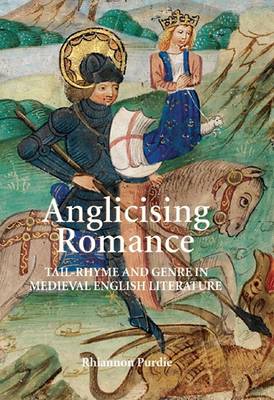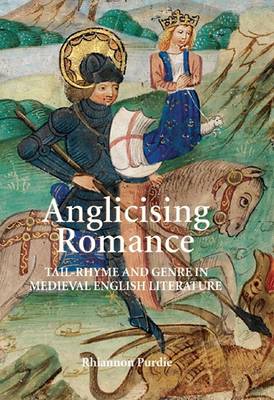
- Retrait gratuit dans votre magasin Club
- 7.000.000 titres dans notre catalogue
- Payer en toute sécurité
- Toujours un magasin près de chez vous
- Retrait gratuit dans votre magasin Club
- 7.000.0000 titres dans notre catalogue
- Payer en toute sécurité
- Toujours un magasin près de chez vous
90,45 €
+ 180 points
Description
A reappraisal of the tail-rhyme form so strongly associated with medieval English romance, and how it became so appropriated. Tail-rhyme romance unites a French genre with a continental stanza form, so why was it developed only in Middle English literature? For English audiences, tail-rhyme becomes inextricably linked with the romance genre in a way thatno other verse form does. The first examples are recorded near the beginning of the fourteenth century and by the end of it Chaucer's Sir Thopas can rely on it to work as a shorthand for the entire Middle English romance tradition. How and why this came to be is the question that Anglicising Romance sets out to answer. Its five chapters discuss the stanza's origins; the use of tail-rhyme in Anglo-Noman literature; questions of transmission and manuscript layout; the romances of the Auchinleck manuscript; and the geographic spread of tail-rhyme romance. The individual entries in the Appendix present newly reassessed evidence for the provenance and date of each of thethirty-six extant tail-rhyme romances. RHIANNON PURDIE is Senior Lecturer in Mediaeval English at the University of St Andrews.
Spécifications
Parties prenantes
- Auteur(s) :
- Editeur:
Contenu
- Nombre de pages :
- 284
- Langue:
- Anglais
- Collection :
- Tome:
- n° 9
Caractéristiques
- EAN:
- 9781843841623
- Date de parution :
- 18-09-08
- Format:
- Livre relié
- Format numérique:
- Ongenaaid / garenloos gebonden
- Dimensions :
- 163 mm x 234 mm
- Poids :
- 793 g

Les avis
Nous publions uniquement les avis qui respectent les conditions requises. Consultez nos conditions pour les avis.






